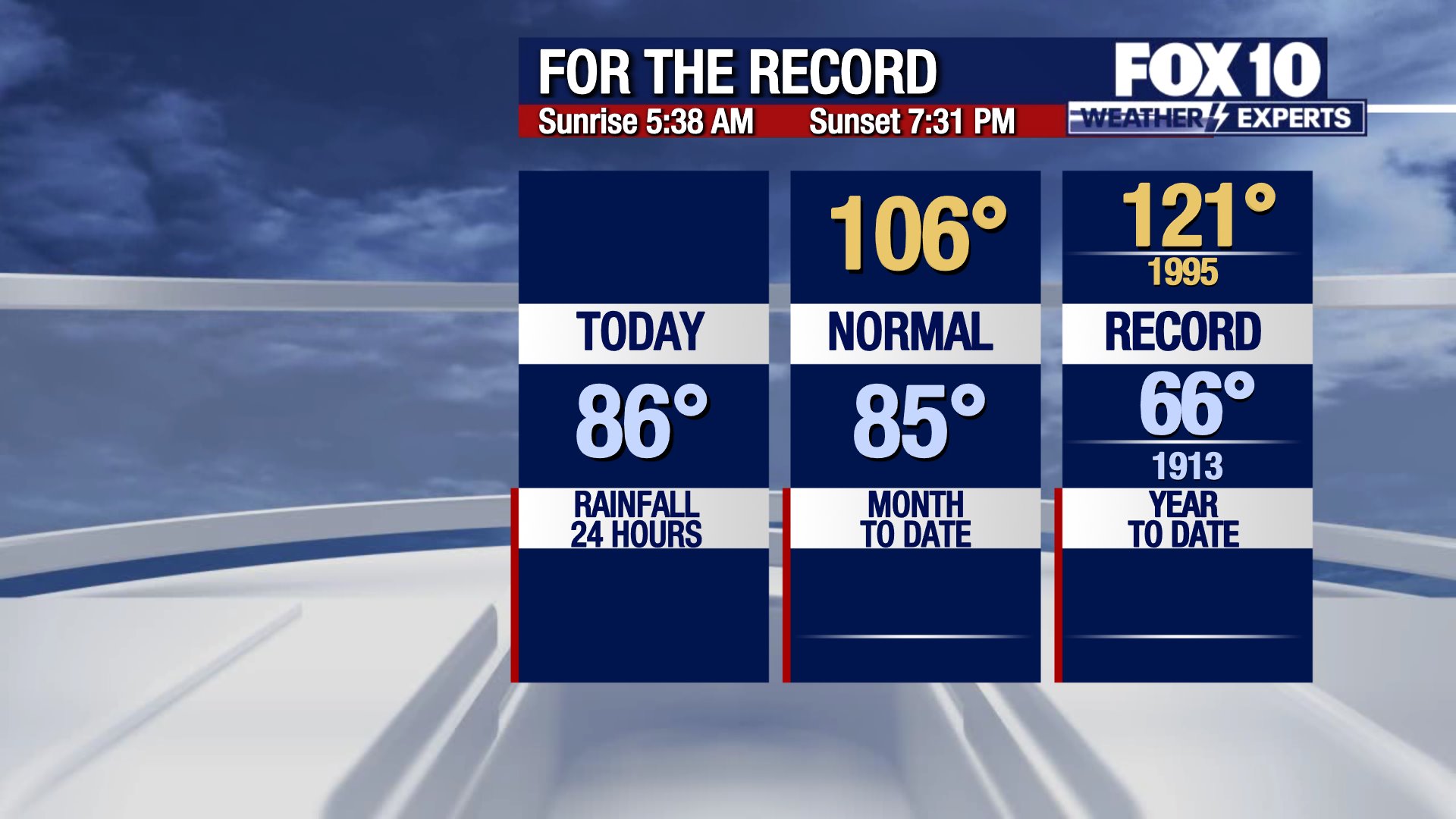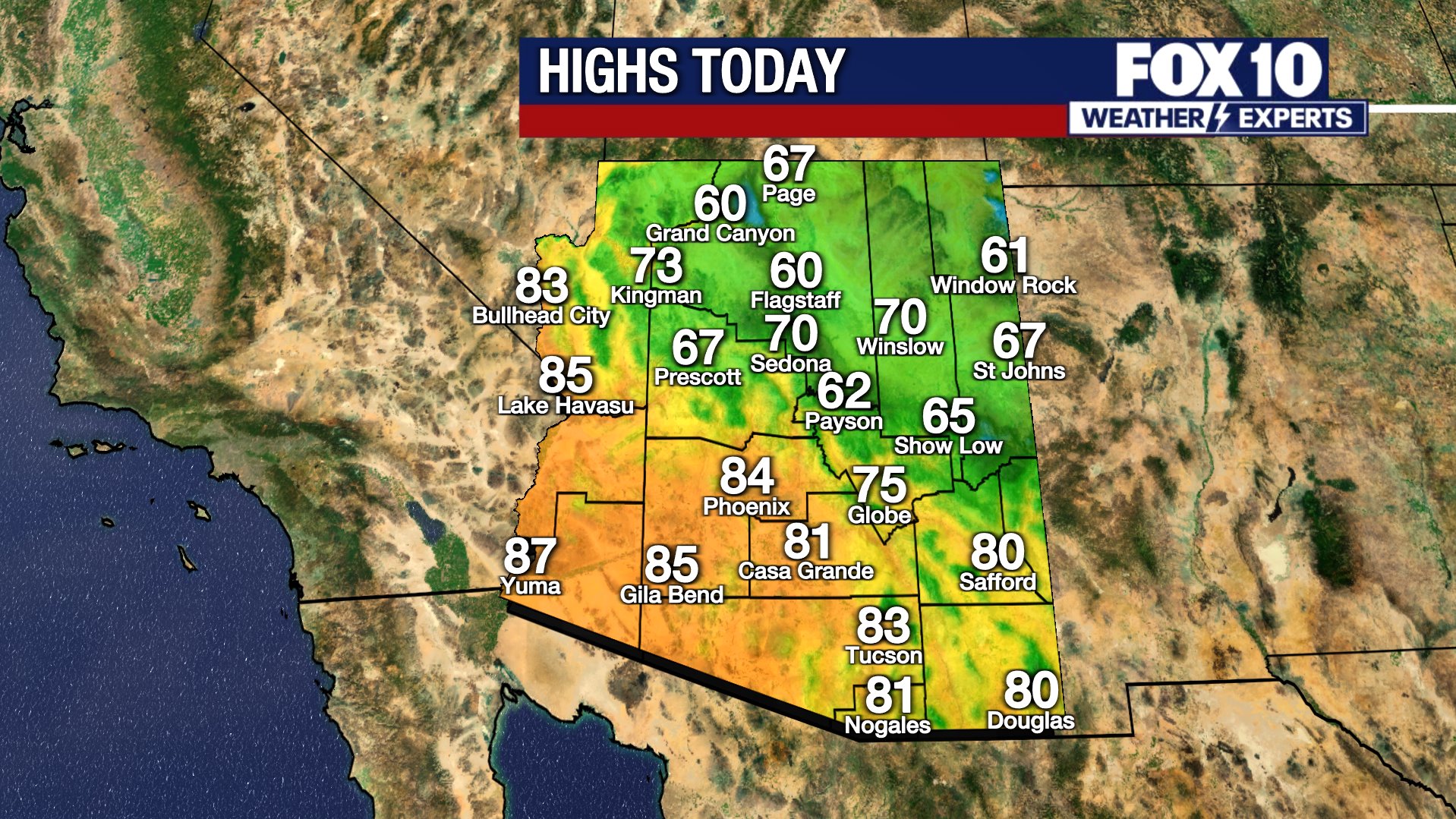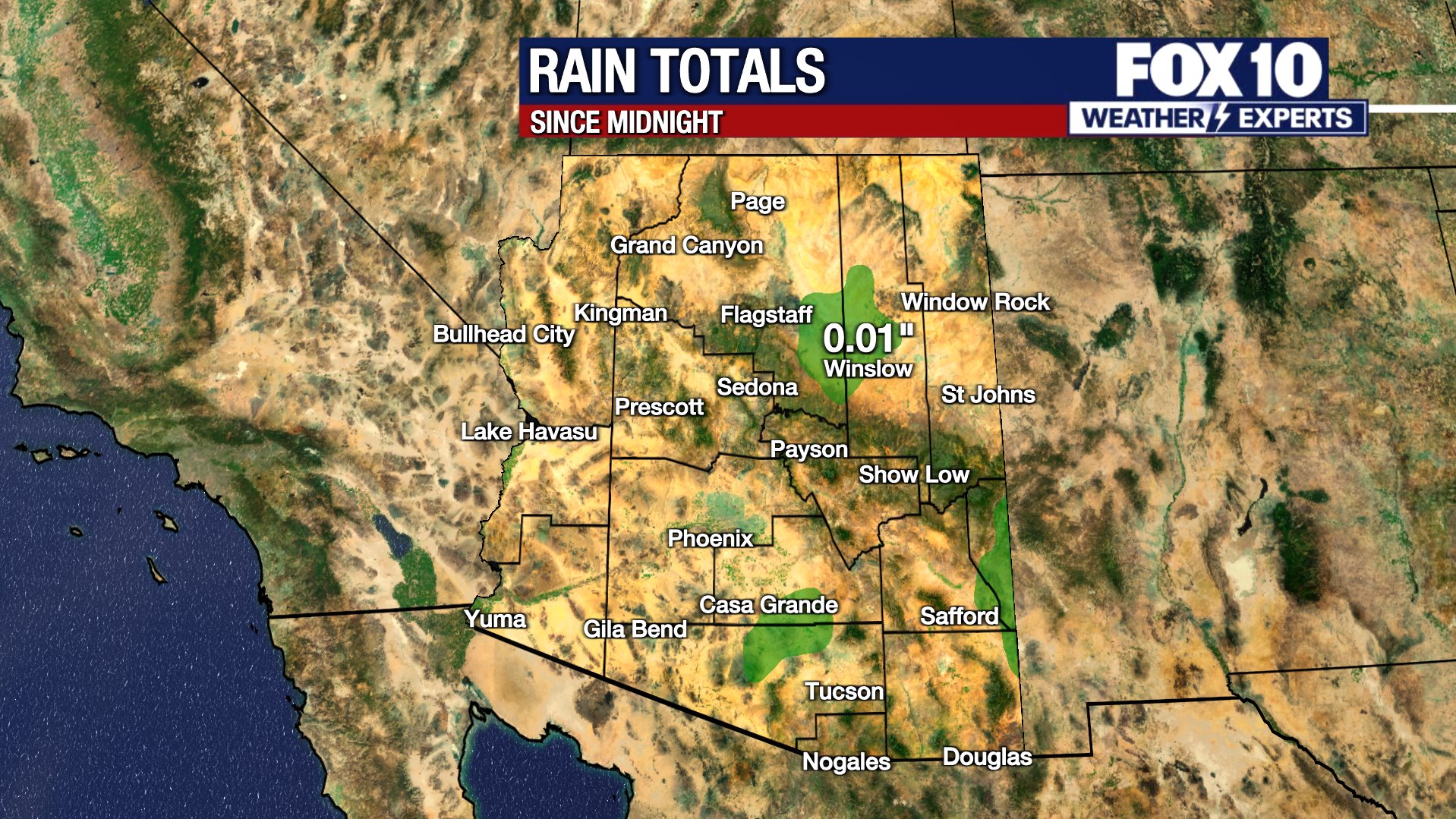Arizona weather forecast: Extreme heat on the last day of June

Evening Weather Forecast - 6/30/25
Monday was a hot one! But, we may see some monsoon action this week, which will help cool things off a bit.
PHOENIX - A big swing from extreme heat to showers and storms this week.
What To Expect:
Monday starts off with high heat and mostly dry conditions. Over much of southern Arizona and in the Grand Canyon, an Extreme Heat Warning is in place. The warning lasts through Tuesday for the Valley.
The high was 116 degrees on Monday, which set a new record for the date. The previous record was 115, set in 2013.
A few showers will be possible over far southeastern Arizona on Monday, but most of the state will remain too dry to allow for showers and thunderstorms to fire off.
Monsoon Moisture Approaches:
Monsoonal moisture will begin to stream more steadily into the state on Tuesday. High pressure will set up to the east and an area of low pressure parks to the west of Arizona. That combo will allow for a sufficient funnel-effect of moisture from Mexico.
As a result of the expected pattern, highs will remain well above average on Tuesday but will fall by Wednesday into Thursday.
Tuesday in the Valley reaches 113 degrees, and will continue under an Extreme Heat Warning. Wednesday drops to 107 and Thursday falls to 102 for an afternoon high. Rain chances increase by 10-20% by late Tuesday, 20-40% Wednesday into Thursday around the Phoenix Metro.
The best time period for storms in the Valley appears to be Wednesday afternoon through Thursday morning.
In northern Arizona, rain chances sharply increase on Tuesday and continue through Wednesday and Thursday before quickly dropping off on Friday.
What's next:
Good news for folks planning to head outdoors for the 4th of July: temperatures remain below average, but rain chances diminish. It looks generally dry for any fireworks shows and celebrations with a high of around 104 in Phoenix.
You can always check the latest weather conditions by visiting the FOX 10 Phoenix weather page, or download the Free FOX 10 Weather app, which is available on Apple iOS and Android.
Scroll down this page for satellite and radar, day planner, records, current temperatures, 10-day forecast, forecast highs, and recent rainfall totals, plus live video feeds.

Preventing heat exhaustion/heat stroke
The Arizona Department of Health Services stated the following precautions can be taken to prevent heat exhaustion or heat stroke:
- Stay in air-conditioned buildings
- Find a cooling center/hydration station
- Limit outdoor activity during the hottest part of the day (mid-day)
- Check on at-risk friends, family, and neighbors at least twice a day
- Drink water before, during, and after working or exercising outside
- Check the UV Index
- Check the heat risk map
Road Conditions
- Call 511 anywhere in Arizona or 1-888-411-ROAD (7623)
- az511.com
Driving in extreme temperatures
The Arizona Department of Transportation’s tips for driving in extreme temperatures include:
Have sun protection: In addition to an umbrella, take sunscreen and a wide-brimmed hat and wear loose-fitting, light-colored cotton clothing.
Fuel up: Keep your tank at three-quarters full. Running out of gas, especially in a remote location, is dangerous in extreme heat.
Hydrate: Take a cooler to keep extra drinking water cold, and consider adding several frozen bottles of water to use for cooling off or to thaw and drink if needed. Make sure everyone, including pets, stays hydrated.
Get help: If your vehicle breaks down in extreme heat, call for assistance right away to reduce wait time, and run the AC. If the AC isn’t working, roll down all windows.
Wait safely: If the temperature inside your vehicle becomes too hot, everyone, including pets, should exit carefully and seek out or create a shaded area as far away from the travel lanes as possible. Be careful walking on the road surface, which can be hot enough to burn skin. Keep your shoes on and try to keep your pets’ paws off the pavement. If you are stopped along the highway, raise the front hood and turn on hazard lights. Please keep in mind that parking in tall brush can start a fire.
Check your vehicle: You can help avoid breakdowns and blowouts by making sure your vehicle is in good operating condition. Check your air conditioner and coolant levels, top off any vital engine fluids and make sure your battery is up to par. Check your tire pressure, as the combination of under inflated tires and hot pavement can lead to a blowout.
MORE: https://azdot.gov/about/transportation-safety/severe-weather








